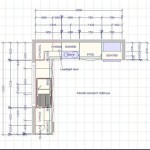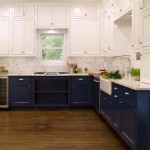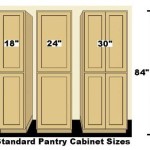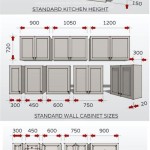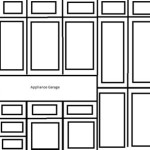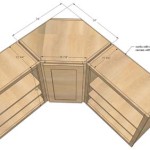Estimating the Cost of Kitchen Cabinets: A Comprehensive Guide
Kitchen cabinets represent a significant portion of any kitchen renovation budget. Understanding the factors that influence the cost of kitchen cabinets is crucial for effective planning and avoiding budgetary overruns. This article provides a detailed overview of the variables involved in estimating the cost of kitchen cabinets, empowering homeowners and contractors to make informed decisions.
The price range for kitchen cabinets is exceptionally broad, varying significantly based on factors such as materials, construction quality, style, and installation complexity. A basic understanding of these elements allows for a more accurate preliminary budget estimate.
Key Factors Influencing Cabinet Costs
Several core factors dictate the overall expense associated with kitchen cabinets. These factors range from the fundamental material choices to the level of customization desired.
1. Cabinet Material: The materials used in cabinet construction have a direct and substantial impact on cost. Common cabinet materials include:
Plywood: Generally considered a higher-quality option compared to particleboard, plywood cabinets offer enhanced durability and resistance to moisture. Plywood typically carries a higher price point than particleboard.
Particleboard (or Furniture Board): This engineered wood product is a more budget-friendly alternative. While less expensive than plywood, particleboard is also more susceptible to water damage and may not hold screws as securely. Cabinets made with particleboard are often laminated or covered with a veneer.
Medium-Density Fiberboard (MDF): MDF is another engineered wood product known for its smooth surface and stability. It's frequently used for painted cabinet doors and drawers due to its ability to hold paint well and resist warping. MDF typically falls in the mid-range price bracket.
Solid Wood: Solid wood cabinets represent the premium end of the spectrum. Woods like maple, oak, cherry, and walnut offer exceptional durability and aesthetic appeal. However, solid wood is also the most expensive option and requires proper sealing and finishing to prevent warping or cracking due to changes in humidity.
Wood Veneer: A thin layer of real wood applied over a substrate like plywood or MDF. This provides the look of solid wood at a lower cost, although it may not be as durable as solid wood.
Stainless Steel Stainless steel cabinets are most commonly found in commercial kitchens or modern residential designs. They are durable, easy to clean, and resistant to corrosion, but can be quite expensive.
The chosen material will significantly affect not only the upfront cost but also the longevity and maintenance requirements of the cabinets.
2. Cabinet Construction: The way the cabinets are constructed also plays a crucial role in determining the price. There are generally three main types of cabinet construction:
Stock Cabinets: These are pre-made cabinets available in standard sizes and limited styles. Stock cabinets are the most affordable option and are readily available at most home improvement stores. However, they offer minimal customization.
Semi-Custom Cabinets: These cabinets offer a balance between affordability and customization. Semi-custom cabinets are available in a wider range of sizes, styles, and finishes compared to stock cabinets. They can often be modified to fit specific kitchen layouts and design preferences.
Custom Cabinets: Custom cabinets are built to the exact specifications of the homeowner. They offer the highest degree of customization and flexibility in terms of size, style, materials, and features. Custom cabinets are the most expensive option, but they provide a truly unique and personalized kitchen design. The construction process allows for accommodating unique architectural features or maximizing space efficiency.
The level of construction detail, such as dovetail drawer joints, soft-close hinges, and full-extension drawer slides, also contributes to the overall cost. Higher-quality construction features typically add to the price but enhance the functionality and lifespan of the cabinets.
3. Cabinet Style and Design: The aesthetic design of the cabinets also influences their price. Intricate designs, raised-panel doors, and decorative moldings require more labor and materials, leading to higher costs. Simpler styles, such as Shaker or slab-door cabinets, are generally more affordable.
The type of finish applied to the cabinets also affects the price. Painted finishes, glazed finishes, and stained finishes all have different costs associated with them. High-end finishes, such as multi-step processes or custom color matching, will increase the overall cost.
The inclusion of specialized storage solutions, such as pull-out shelves, spice racks, or trash can cabinets, also contributes to the final price. These features enhance the functionality of the kitchen but add to the overall cost.
Breaking Down the Costs: Labor and Installation
While the cost of the cabinets themselves is a primary consideration, the labor and installation fees are also significant components of the overall budget. Failing to account for these expenses can lead to unexpected financial strain.
1. Professional Installation: Unless the homeowner possesses significant carpentry and installation expertise, professional installation is generally recommended. Professional installers have the necessary tools and experience to ensure that the cabinets are installed correctly, level, and securely. Professional installation typically adds significantly to the overall kitchen renovation cost.
Installation costs vary depending on the complexity of the project, the number of cabinets being installed, and the geographical location. Installation can include removing existing cabinets, preparing the walls, installing the new cabinets, and connecting plumbing and electrical fixtures as needed. The complexity of the kitchen layout, including the presence of islands or peninsulas, also affects installation time and cost.
When obtaining quotes for cabinet installation, it's crucial to ensure that the quotes are detailed and comprehensive. A detailed quote should specify the scope of work, the materials being used, and the labor costs involved. It's also important to ask about any potential additional costs, such as charges for removing old cabinets or making modifications to existing plumbing or electrical systems.
2. DIY Installation: While DIY installation can save money on labor costs, it's not recommended for inexperienced homeowners. Incorrect installation can lead to functional problems, aesthetic flaws, and even safety hazards. If considering DIY installation, it's essential to carefully assess one's skills and experience and to thoroughly research the installation process.
DIY installation also requires specialized tools, such as a stud finder, level, drill, and saw. These tools can add to the overall cost of the project if they are not already owned. Furthermore, DIY installation can be time-consuming and physically demanding, especially for larger kitchens.
3. Additional Labor Considerations: Besides the installation of the cabinets themselves, other labor costs may need to be considered. These costs can include:
Demolition: Removing existing cabinets can be labor-intensive and may require specialized tools. Demolition costs can vary depending on the size and complexity of the kitchen.
Plumbing and Electrical Work: If the kitchen renovation involves moving plumbing fixtures or electrical outlets, a licensed plumber or electrician will be required. Plumbing and electrical work can add significantly to the overall cost of the project.
Painting and Finishing: If the cabinets are unfinished, they will need to be painted or stained. Painting and finishing can be done by the homeowner or by a professional painter. Professional painting and finishing can add to the overall cost, but it can also ensure a high-quality and durable finish.
Strategies for Cost Optimization
Given the significant investment associated with kitchen cabinets, exploring strategies to optimize costs is prudent. Several approaches can help reduce expenses without compromising quality or functionality.
1. Prioritize Needs vs. Wants: Differentiating between essential features and desired luxuries can significantly impact the overall budget. Focus on the core functionality of the cabinets and prioritize features that are most important to the homeowner. Consider sacrificing less critical features to stay within budget.
For example, instead of custom-built cabinets with elaborate storage solutions, consider semi-custom or stock cabinets with basic shelving and drawers. Instead of high-end finishes, consider more affordable paint or stain options.
2. Explore Refacing Options: Refacing involves replacing the doors and drawer fronts of existing cabinets while keeping the existing cabinet boxes. Refacing can be a more affordable alternative to replacing the entire cabinets, particularly if the existing cabinet boxes are in good condition. Refacing can give the kitchen a fresh new look without the expense of a full cabinet replacement.
3. Compare Quotes from Multiple Suppliers and Contractors: Obtaining quotes from multiple suppliers and contractors is essential for ensuring that the homeowner is getting the best possible price. Compare the quotes carefully, paying attention to the scope of work, the materials being used, and the labor costs involved. Don't hesitate to negotiate with suppliers and contractors to get a better price.
4. Consider DIY Options for Certain Tasks: If the homeowner is comfortable with basic carpentry and installation tasks, consider tackling some of the less complex aspects of the project themselves. For example, the homeowner could remove the old cabinets, paint the walls, or install the backsplash. Performing these tasks themselves can save money on labor costs.
5. Utilize Sales and Promotions: Many cabinet suppliers and home improvement stores offer sales and promotions throughout the year. Take advantage of these opportunities to save money on cabinets. Look for discounts on discontinued models, clearance items, or seasonal sales.
6. Opt for Standard Sizes and Designs: Standard-sized cabinets are typically less expensive than custom-sized cabinets. Opting for standard sizes and designs can save money on both the cabinets themselves and the installation costs. Simple cabinet door designs, such as Shaker or slab-door cabinets, are generally more affordable than more elaborate designs.
7. Choose Affordable Materials Wisely: Selecting materials strategically can significantly impact the budget. For example, consider using plywood for the cabinet boxes and MDF for the doors. Plywood offers good durability for the boxes, while MDF provides a smooth surface for painting the doors. This combination can provide a balance between cost and quality.
Estimating the cost of kitchen cabinets requires a thorough understanding of the factors that influence price. By carefully considering the material choices, construction methods, style preferences, and labor costs, homeowners can develop a realistic budget and make informed decisions. Prioritizing needs, exploring cost-saving strategies, and obtaining multiple quotes can help optimize expenses and achieve the desired kitchen renovation within a reasonable financial framework.

How Much Do Custom Cabinets Cost

How Much Does A Kitchen Remodel Cost 2024 Average

What Is The Average Kitchen Cabinet Cost
Kitchen Remodel Cost Estimator Main Line Design

What Do Kitchen Cabinets Cost Tips To Stay In Budget

Kitchen Remodel Cost Estimator Main Line Design

Modular Kitchen Cost Per Sq Ft How Much Should You Budget

Kitchen Renovation Estimator Recommend My

The Cost Of A Kitchen Remodel Understanding Your Budget

Kitchen Cabinets Costs 2024 Data Angi
Related Posts

